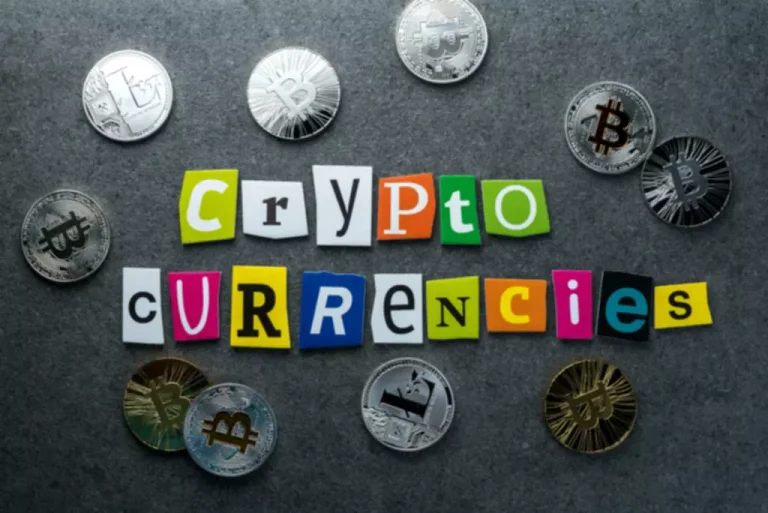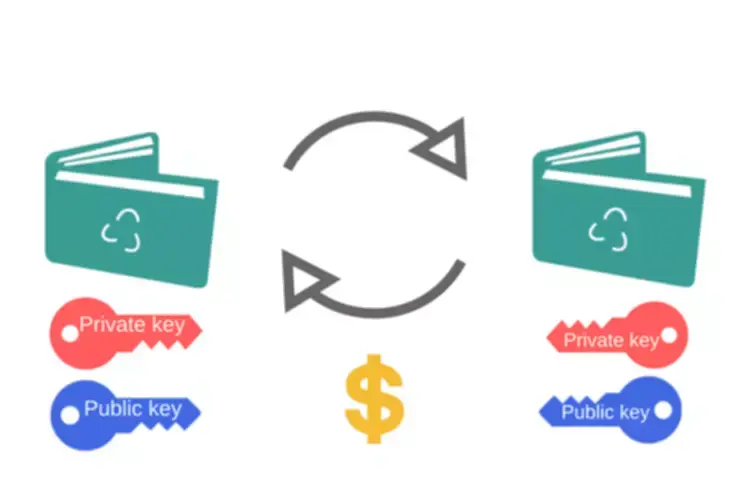Liquidity providers need to stay up-to-date with these developments and invest in new technologies to remain competitive. The future of ETF liquidity providers seems promising as the demand for ETFs continues to grow. Liquidity providers play a crucial role in supporting creation unit creation and redemption, ensuring that the market remains efficient and liquid.

There are alternatives to relying on liquidity providers, such as using market makers or authorized participants (APs) to create and redeem ETF shares. Market makers are firms that are responsible for making markets in ETFs, similar to liquidity providers. APs are firms that are authorized by the ETF issuer to create and redeem ETF shares directly with the issuer, without going through a secondary market transaction. While these alternatives can provide benefits, they also have their own risks and may not be as efficient as relying on liquidity providers.
Market makers and liquidity providers provide intraday liquidity for securities on the stock exchange. They compete for orders by publishing bid and ask quotes for a number of shares. For an ETF share creation, the authorized participant assembles a portfolio or basket containing the ETF’s underlying securities. The authorized participant turns the basket over to the ETF custodian, who holds all the securities in the ETF. In return, the custodian delivers ETF shares that can be bought and sold in secondary markets.
ETF Primary Market Liquidity
He currently researches and teaches economic sociology and the social studies of finance at the Hebrew University in Jerusalem. There can be no assurance that a liquid market will be maintained for ETF shares. Frequent trading of ETFs could significantly increase commissions and other costs such that they may offset any savings from low fees or costs. Equity securities may fluctuate in value and can decline significantly in response to the activities of individual companies and general market and economic conditions. Important Risk Information
There can be no assurance that a liquid market will be maintained for ETF shares. Vanguard is owned by its funds, which are owned by Vanguard’s fund shareholder clients.
Without these institutions, it would be difficult for investors to buy and sell ETF shares, which could lead to a lack of liquidity and increased volatility. In the primary market, a specific type of entity known as an “authorized participant” (AP) can change the supply of ETF shares available. The AP can offload a large basket of shares (i.e., redeem) or acquire a large basket of shares (i.e., create) directly from the ETF issuer. Typically, the AP is doing business in the primary market to meet supply and demand imbalances from the trading that happens in the secondary market. Ultimately the primary market helps provide for additional liquidity in the secondary market.
ETF Liquidity Provider: How To Choose One?
Shares may trade at a premium or discount to their NAV in the secondary market. The creation and redemption process ensures there is sufficient inventory to fill investors’ orders. It allows large buy or sell trades to be executed in the ETF with little or no impact to the market. The bulk of ETF liquidity is in the primary market, where the ETF accesses the underlying securities it holds. Here, the creation and redemption mechanism, which is an important process for ETFs, comes into play. ETFs provide investors with several benefits, including lower trading costs, flexibility, transparency, liquidity, and tax efficiency.

Similar to a stop order, but in addition to setting the stop price, you also set a limit price. When the market hits the stop price your stop order becomes a limit order, at the limit price you specified. When you place a stop-limit order, your priority is trying to limit a loss or protect a profit without the unpredictability of a market order.
The secondary market is where any investor with a brokerage account can access the universe of U.S.-listed ETFs. ADV reflects the state of an ETF’s secondary market, and investors can use https://www.xcritical.com/ ADV to assess the likelihood of fulfilling their trades. With so much volume staying in the secondary market, many ETFs trade independent of the costs of their underlying constituents.
Where do ETFs get their liquidity?
They trade off supply and demand for the ETF itself, and the price reflects the turnover and volatility of the ETF. The liquidity provider’s use of these features—and our guidance to clients on how to utilize these features to their advantage—is designed to keep trading costs as low as possible. Some ETF trading activity, called over-the-counter (OTC), takes place off exchanges altogether. This activity is sometimes not reflected in the volume data provided by stock exchanges. Those market makers might have inventories or can use their balance sheet to fill ETF orders.

First, they ensure that there is always a buyer or seller available for ETF shares, which helps to ensure that investors can buy and sell ETFs at fair prices. Second, liquidity providers help to reduce the bid-ask spread, which is the difference between the price at which an investor can buy an ETF and the price at which they can sell it. A narrower bid-ask spread means that investors can buy and sell ETFs more efficiently, which can result in lower transaction costs. Finally, liquidity providers help to ensure that the ETF remains fully invested in the underlying securities, which helps to maintain the integrity of the ETF.
Vanguard ETF Shares are not redeemable with the issuing fund other than in very large aggregations worth millions of dollars. Instead, investors must buy and sell Vanguard ETF Shares in the secondary market and hold those shares in a brokerage account. In doing so, the investor may incur brokerage commissions and may pay more than net asset value when buying and receive less than net asset value when selling. All ETFs are listed on a stock exchange, even if their underlying assets aren’t equities. That means that historically difficult-to-trade assets, such as bonds or commodity futures that are part of an ETF, benefit from the secondary-market liquidity. If you’re a typical investor, your “on screen” view is probably limited to what’s available through public financial websites.
The value at the time of redemption may be more or less than the original cost. DRW offers liquidity to institutional investors focused on trading ETFs globally. ETFs that invest in less liquid securities, such as real estate or assets from emerging markets, tend to have less liquidity. Bid/Ask Spread
The difference between etf liquidity providers the highest price a buyer is willing to pay for an asset and the lowest price the seller will accept to sell. Liquidity providers relate to the secondary market, serving as mediators between brokerage companies and investors. There are occasions when executing a large order for an ETF may have a market impact.
- They are responsible for creating and redeeming ETF shares, which is the process by which new shares are introduced into the market or existing shares are withdrawn.
- Authorized participants (APs) are financial institutions that have the ability to create and redeem ETF shares directly with the ETF issuer.
- Market makers set the bid and ask prices for ETFs, while APs help to ensure that the ETF’s share price stays close to its NAV by creating or redeeming shares.
- Any trading symbols displayed are for illustrative purposes only and are not intended to portray recommendations.
It should not be considered a solicitation to buy or an offer to sell a security. It does not take into account any investor’s particular investment objectives, strategies, tax status or investment horizon. Secondary Market
The market in which ETF shares or common shares of public companies that currently exist are traded on exchanges between investors. Liquidity
The ability to quickly buy or sell an investment in the market without impacting its price. B2Broker is a company that specializes in innovative and cutting-edge solutions.
However, purchasing stocks can be a powerful tool to make much of your investments. ETFs are subject to market fluctuation and the risks of their underlying investments. The profiles of these two similar ETFs can lead to different relative levels of liquidity. Investors might find it easier and more cost-effective to trade shares of Alpha ETF than Beta ETF, despite both ETFs tracking the same index. SSGA Intermediary Business offers a number of products and services designed specifically for various categories of investors.
ETFs trade like stocks, are subject to investment risk, fluctuate in market value and may trade at prices above or below the ETF’s net asset value. As the ETF increases in value relative to the portfolio NAV, arbitrageurs may be incentivized to sell the ETF, buy the underlying securities (for in-kind creations), and create the ETF shares. As the ETF decreases in value relative to the portfolio NAV, arbitrageurs may be incentivized to buy the ETF, sell the underlying securities (for in-kind redemptions) and redeem the ETF shares. ETF shares can trade in the secondary market at a premium or discount to their Net Asset Values, which can create a catalyst for creations or redemptions. Although Exchange Traded Fund (ETF) liquidity can seem complex, here, we explore the various sources of liquidity for ETFs, which contain a portfolio of securities and trade throughout the day like stocks.
The creation process starts with the authorized participants (APs) who are responsible for creating new ETF shares. APs are typically large financial institutions with the necessary resources and expertise to create or redeem ETF units. To create new shares, APs must deliver a basket of securities to the ETF issuer in exchange for a block of ETF shares. The basket of securities usually represents the underlying holdings of the ETF and must meet specific creation requirements. Once the ETF issuer receives the basket, they issue new shares to the AP, which can then sell them to investors on the secondary market. The creation process is essential to maintaining the supply of ETF shares and ensuring that the ETF’s market price remains close to its net asset value (NAV).
